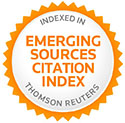Causative morphology in Toba/Qom (Guaycuruan) input: Remarks on verb acquisition
Keywords:
verbas, valency, acquisition, toba/qom, input
Abstract
Attention has often been given to the complexity entailed by the task of learning verbs. Previous research has studied the information children use to infer verb meaning. The availability of different types of linguistic information is subject to the typological characteristics of their language but also to their frequency in the input. Toba/qom (Guaycuruan) presents strategies to increase or reduce verb valency that indicate whether the event expressed by the verb is causative. In this study we have analysed some causative and antipassive operations in the input in toba/qom to three male children and one female child (M=1;9) from Chaco (Argentina). Examples from a corpus of spontaneous speech were provided (Rosemberg et al., 2015-2016). In addition, we have studied the frequency of these mechanisms in the input. The examples showed that these mechanisms provide useful evidence to interpret verb semantics. Moreover, they occur with a diversity of verb roots and in the input to all of the children. However, the frequency of the analysed suffixes in the input is low (less than 5%), specially in child-directed speech.Downloads
Download data is not yet available.
Published
2019-11-30
How to Cite
Audisio, C. P., Cúneo, P., Ojea, G. L., & Rosemberg, C. R. (2019). Causative morphology in Toba/Qom (Guaycuruan) input: Remarks on verb acquisition. Signo & Seña, (36), 69-95. https://doi.org/10.34096/sys.n36.9203
Issue
Section
Dossier. Morfología y sintaxis de lenguas indígenas americanas
- Authors keep the copyright and give the journal the right of the first publication, with the work registered with the Creative Commons Attribution-ShareAlike 4.0 International License, which allows third parties to use what is published whenever they mention the authorship of the work and the first publication in this magazine.
- Authors can make other independent and additional contractual agreements for the non-exclusive distribution of the article published in this journal (eg, include it in an institutional repository or publish it in a book) as long as they clearly indicate that the work It was published for the first time in this magazine.
- Authors are allowed and recommended to publish their work on the Internet (for example on institutional or personal pages).

















